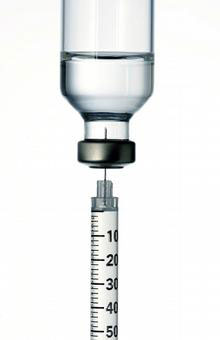Blog
Juvederm May Be Approved For Cheek Augmentation
Dermal fillers like Juvederm have long been used by plastic surgeons to restore volume to sunken or hollow cheeks. Despite this, dermal fillers have yet to receive FDA-approval for cheek augmentation.
But this might soon change.
Earlier this month, the FDA’s General and Plastic Surgery Devices Panel of the Medical Devices Advisory Committee unanimously agreed that Juvederm is both a safe and effective treatment for volume deficient areas in the mid face.
Allergan’s (the maker of Juvederm) Executive VP of Research and Development and Chief Scientific Officer, Dr. Scott Whitcup, had this to say about the pending FDA-approval:
“Allergan is committed to working with the FDA as they continue their review of our PMA for Juvederm Voluma XC, with the goal of providing consumers with the first treatment option that has been specifically developed to help restore cheek volume that has been lost over time.”
Though the advisory’s recommendation isn’t binding, it will certainly hold weight when the FDA makes its final decision. If approved, Juvederm will be the first of its kind for cheek augmentation. Allergan hopes to launch Juvederm Voluma XC by the end of this year.
Other Uses for Juvederm
In addition to cheek augmentation, Juvederm is a versatile anti-aging treatment that can be used to:
- Reduce lines and grooves between the eyes (also known as frown lines)
- Soften marionette lines (wrinkles between the corners of the mouth and the sides of the chin)
- Augment the lips or fill in deep vertical lip wrinkles
- Add volume to the backs of aging hands to make veins less prominent
The results of Juvederm typically last between four and six months. Repeat treatments will be necessary to maintain results. If you’re considering Juvederm, it’s best to schedule a consultation with a qualified plastic surgeon.
Panel Recommends FDA Approve Restylane as Lip Enhancer

An FDA panel has recommended that the FDA expand the approved use of Restylane to include lip augmentation. The injectable is currently approved to treat facial wrinkles and folds, like the nasolabial folds on the sides of the mouth.
The FDA usually follows the advice of its advisory panels, and if it does approve the expanded use, then Restylane can be marketed for the lip procedure. FDA approval would make Restylane the first hyaluronic acid dermal filler in the U.S. indicated for use in the lips.
Jonah Shacknai, Chairman and Chief Executive Officer of Medicis, Restylane’s maker, said in a statement that the panel’s recommendation reflects its “confidence in the robust clinical data provided by Medicis.”
Restylane was the first hyaluronic acid dermal filler approved by the FDA for use in the United States (in 2003). It launched in the U.S. in January 2004, and according to Medicis, it has been used in over 10 million treatments worldwide.
Restylane is injected into the tissue and over time is resorbed by the body as the treatment results gradually wear off; results typically last about six months.
Off-Label Uses
Many surgeons are already using Restylane to enhance the lips. Doctors can use drugs for off-label uses — meaning, uses that aren’t approved by the FDA — but for a drug maker to market it for a certain purpose, it must have FDA approval.
Plastic surgeon Dr. Farhad Rafizadeh, who uses Restylane for lip enhancement, said he often recommends it because it stays put and doesn’t seep into other areas of the face as other dermal fillers do. “Restylane allows me to define the shape of the lip in a more precise manner,” he added.
In addition to the lips, common off-label uses for Restylane include filling the tear trough (the saggy skin under the eyes) and marionette lines and facial contouring of the chin, cheeks and temples.
Injectable Treatments to Get You Ready for Wedding Season

Wedding season is almost here. Whether you are the bride, mother of the bride, a bridesmaid, or a wedding guest—you will want to look your best. A growing number of our patients are seeking out non-surgical treatments to enhance and enliven their look. At Will Surgical Arts, we can help you put your best face forward. Offering a number of injectable treatments, Dr. Will can help you achieve a youthful radiance this nuptial season.
Continue reading “Injectable Treatments to Get You Ready for Wedding Season” »
Study Investigates Botox as Treatment for Tennis Elbow
Botox has potential as a treatment for chronic tennis elbow, according to a study appearing in the journal of the Canadian Medical Association.
Physicians in Tehran studied the use of Botulinum toxin for treatment of chronic tennis elbow, a condition also known as lateral epicondylitis. Results show that Botox can reduce the pain of tennis elbow at rest but as a side effect, it may also cause weakness in finger extension.
At the Imam Khomeini Hospital Complex in Tehran, a randomized placebo-controlled trial was conducted with 48 patients. They were injected with either Botox or saline, the placebo. Injection sites were customized for each patient’s anatomy.
When Botox injections were performed with anatomic measurements as a guide, they “significantly reduced pain at rest in patients with chronic refractory lateral epicondylitis.” Due to the side effects, the treatment may not be appropriate for patients who require finger extension.
Read more online from the journal of the Canadian Medical Association
Restylane Manufacturer Launches Skin Care Line
Q-Med, manufacturer of Restylane, announced their new line of skincare products last week during the World Congress for Anti-Aging Medicine in Monaco. The new line of products is said to contain the same patented NASHA technology used in Restylane injectable filler, which they say adds a pleasing consistency while preserving moisture and luster in the skin.
last week during the World Congress for Anti-Aging Medicine in Monaco. The new line of products is said to contain the same patented NASHA technology used in Restylane injectable filler, which they say adds a pleasing consistency while preserving moisture and luster in the skin.
Q-Med explains their intentions with the new skincare line on their website: “The secret to beautiful skin is balanced skin hydration combined with a healthy and protective skin barrier. Restylane Skincare combines these two qualities in an innovative series of creams [that] supplement the effect of injectable Restylane products.”
NASHA – Why Restylane is Effective
Non-Animal Stabilized Hyaluronic Acid is the secret to Restylane’s success. Hyaluronic acid serves many important functions in many areas of your body. Because it can bind water, HA hydrates the skin and lubricates the joints. The stabilization process allows Restylane to produce enduring results.
While Restylane has been around longer than most wrinkle fillers, it’s not the only product to utilize HA. Products like Prevelle, Hydrelle and others are now widely available for similar purposes. However, according to Q-Med, these fillers are far from being Restylane clones.
The least modified competing products are still considerably more chemically changed than the NASHA gels. Competing products are either not as viscous as the NASHA gels, which means that they cannot build and retain volume in the same way, or they are considerably more chemically changed.
The new Restylane Skincare line should be available in Sweden and Europe this summer. If these products become available here in Maryland, we will be sure to let you know.
Martha Stewart Reveals Top Beauty Tricks
 Famous worldwide for impeccable taste and a keen eye for detail, Martha Stewart takes a similar approach to her daily beauty routine.
Famous worldwide for impeccable taste and a keen eye for detail, Martha Stewart takes a similar approach to her daily beauty routine.
In the most recent issue of Allure Magazine, the 71 year old former model turned business woman revealed some of her most intimate beauty tricks, including the secret behind her blemish-free complexion:
“I rarely get blemishes now, but if perchance I’m starting to get one, I extract it with my old-fashion fingers, unless I’m getting a facial later that week. I don’t like metal on my face.”
“I’ve tried Botox…”
Martha also wasn’t afraid to admit she ops for the occasional Botox and Juvederm touch-up:
“I haven’t had facial surgery yet, but I did get Juvederm filler after my dog bashed my lip and split it open. I tried Botox. It works for certain things, like for skin under the chin, but I don’t want a taut jawline and a quizzical look.”
As for her more conventional beauty tricks, Martha says she cleanses her face with a hot, steamy cloth every night to loosen up her makeup. She also uses some of her expertly crafted DIY skills to formulate her very own beauty products:
“I’ve made all kinds of things. For instance, I love salt. So I use sea salt, grated lemon peel and sesame seed oil (but not hot sesame oil). That’s s a very good scrub. Sesame oil is the best oil for your skin. It has no smell and dries like a powder.”
Interested in learning more about Martha’s beauty routine? Check out her latest book Living the Good Life, a practical beauty guide for women over 40, which is due to hit store shelves late April.
Image Credit: Wikimedia Commons
Surgical vs. Non-Surgical: The Right Procedure for You
 With so many great options available, narrowing down the right cosmetic procedure for your needs and lifestyle can be a challenge. To make the process a little easier, we suggest first considering some of the pros and cons of surgical verses non-surgical cosmetic enhancement.
With so many great options available, narrowing down the right cosmetic procedure for your needs and lifestyle can be a challenge. To make the process a little easier, we suggest first considering some of the pros and cons of surgical verses non-surgical cosmetic enhancement.
Recovery Time
Generally speaking, most surgical options require a longer period of recovery than non-surgical. If you simply aren’t in a place to take several days off from work, then you’ll probably fare better with a non-surgical procedure that offers minimal recovery time (e.g., Botox injections, dermal fillers or laser skin resurfacing).
Longevity of Results
One of the biggest benefits of cosmetic surgery procedures is that they offer long-term (even somewhat permanent) results. Most patients may never have to go under the knife again – or only several years later to address new age-related changes to their face or body. When it comes to non-surgical procedures, most require regular upkeep (whether it be every few months or every few years) to maintain results long-term.
Type of Results
Are you hoping for a big unveiling of your new look, or would you like improvements to be a little more subtle? Most surgical procedures produce noticeable results, which will most likely be visible to friends, family members and co-workers. If that sounds like too much attention, you might want to consider a non-surgical option that produces gradual results instead.
Total Cost
With its widespread popularity, cosmetic enhancement has become more affordable over the past several years – but that doesn’t mean it’s cheap. In most cases, the more invasive a procedure is, the more expensive it will be. The total cost of cosmetic surgery will account for not only the surgeon fees, but also the anesthesia and surgical facility.
It’s important to keep in mind that most non-surgical procedures like Botox are less expensive upfront, but they may actually cost more in the long run as you continue with routine maintenance. It’s best to ask your cosmetic surgeon or dermatologist for advice if you aren’t sure which is best.
Botox as a Headache Treatment? Researchers Say Yes
 Botox may be used to relieve migraine headaches, according to new research published in Archives of Dermatology. Botox injections “at doses appropriate for cosmetic purposes may be sufficient to prevent migraine attacks” concluded authors of the study.
Botox may be used to relieve migraine headaches, according to new research published in Archives of Dermatology. Botox injections “at doses appropriate for cosmetic purposes may be sufficient to prevent migraine attacks” concluded authors of the study.
An article on Bloomberg.com says Allergan applied for FDA clearance for this treatment application. However, researchers say they can’t explain how Botox works to relieve headaches. One co-author of the study, Rami Burstein says, “[Botox] may block the signals in sensory nerves located on the outside of the head.”
Study Examines Dermal Filler Swelling Side Effect
 Hyaluronic acid fillers, such as Juvederm and Restylane, are a non-surgical way to restore volume to the face. The injections are safe, and hyaluronic acid is a naturally occurring chemical found in the body. However, patients should be aware of potential side effects.
Hyaluronic acid fillers, such as Juvederm and Restylane, are a non-surgical way to restore volume to the face. The injections are safe, and hyaluronic acid is a naturally occurring chemical found in the body. However, patients should be aware of potential side effects.
A new study examined the incidence of edema, a possible side effect of dermal fillers, after hyaluronic acid injections. Published in the American Journal of Cosmetic Surgery, the study looked at cases of swelling for injections done to the under eye area. According to the authors, there has been an increase in the use of hyaluronic acid fillers for under eye rejuvenation during the past decade.
The study reviewed medical records of 51 patients who had received hyaluronic acid gel under the eyes between January 1, 2008 and December 31, 2011. Edema was defined as a clinically significant degree of swelling that lasted a month or more following the injection.
The study found that 12 patients (24%) had prolonged periorbital edema following the procedure. The average duration of the swelling was about 6 months, and Juvederm was the injectable used for the majority of patients (45 of the 51).
According to the authors, there were no signs prior to the injection that “consistently identified patients susceptible to the edema.”
The authors concluded that prolonged swelling occurred in a significant minority of patients. Because it is difficult to identify which patients might be most susceptible to periorbital edema, the authors stressed the importance of doctors discussing this potential complication with patients who are considering getting hyaluronic acid injections under the eyes.
The doctor’s injection technique also plays a role, so it is very important to find a physician who is experienced with the dermal filler.
In addition to filling under eye depressions, hyaluronic acid dermal fillers can also correct nasolabial folds, marionette lines, upper lip wrinkles (i.e., “smoker’s lines”), and deep frown lines. They may also be used for lip augmentation and acne scar correction.
During February and March, save up to $360 on Restylane. Visit www.restylaneusa.com for more information on the promotion.
New Juvederm XC Said to Be More Comfortable
A new Juvederm formula was recently introduced to the market, Juvederm Ultra XC, which  will be advertised as a more comfortable, yet equally effective alternative to other wrinkle filler treatments. Containing 0.3% lidocaine makes the treatment area numb very quickly, possibly decreasing the need for topical anesthetic.
will be advertised as a more comfortable, yet equally effective alternative to other wrinkle filler treatments. Containing 0.3% lidocaine makes the treatment area numb very quickly, possibly decreasing the need for topical anesthetic.
Other wrinkle fillers such as Prevelle Silk have been introduced with lidocaine, but not every cosmetic surgeon has embraced these new age fillers. When Prevelle first received FDA approval in 2008, the response was lukewarm. “The issue with a hyaluronic acid filler with lidocaine is that it doesn’t work until you actually start injecting patients, and these injections are so quick, by the time the lidocaine takes effect, you’re almost finished” said Dr. Joe Niamtu to Cosmetic Surgery Times.
The introduction of lidocaine or Juvederm XC won’t allow surgeons to abandon traditional methods of pain control, but the results cited for Juvederm XC do sound positive.
FDA approval was based on data from a multicenter, double-blind, randomized clinical trial in which 72 patients received 1 of the 2 formulations in each nasolabial fold. Results showed that more than 9o% of participants reported less procedural pain when treated with Ultra XC when compared to non-lidocaine Juvederm.



 last week during the World Congress for Anti-Aging Medicine in Monaco. The new line of products is said to contain the same patented NASHA technology used in Restylane injectable filler, which they say adds a pleasing consistency while preserving moisture and luster in the skin.
last week during the World Congress for Anti-Aging Medicine in Monaco. The new line of products is said to contain the same patented NASHA technology used in Restylane injectable filler, which they say adds a pleasing consistency while preserving moisture and luster in the skin.


 Hyaluronic acid fillers, such as
Hyaluronic acid fillers, such as  will be advertised as a more comfortable, yet equally effective alternative to other wrinkle filler treatments. Containing 0.3% lidocaine makes the treatment area numb very quickly, possibly decreasing the need for topical anesthetic.
will be advertised as a more comfortable, yet equally effective alternative to other wrinkle filler treatments. Containing 0.3% lidocaine makes the treatment area numb very quickly, possibly decreasing the need for topical anesthetic.








